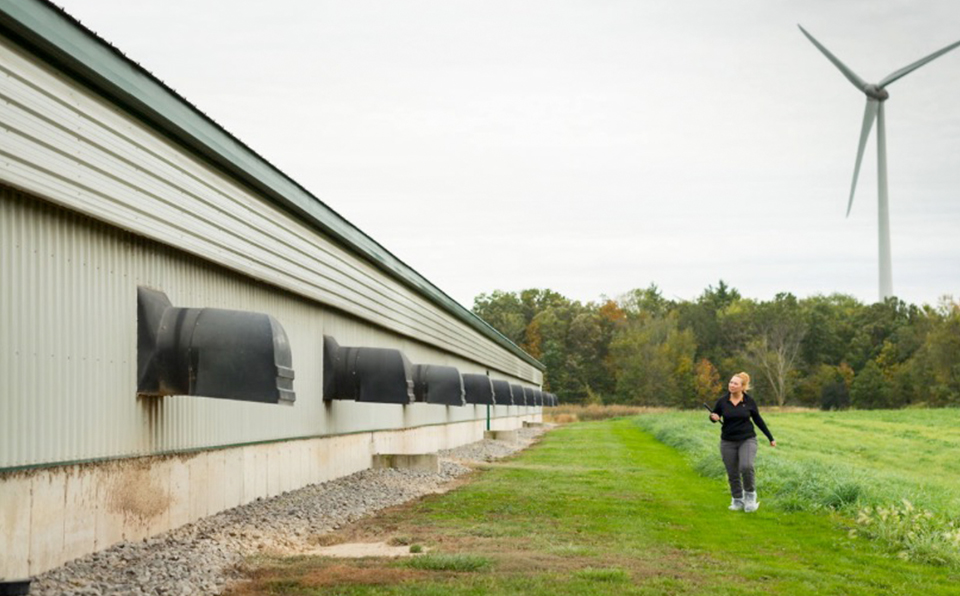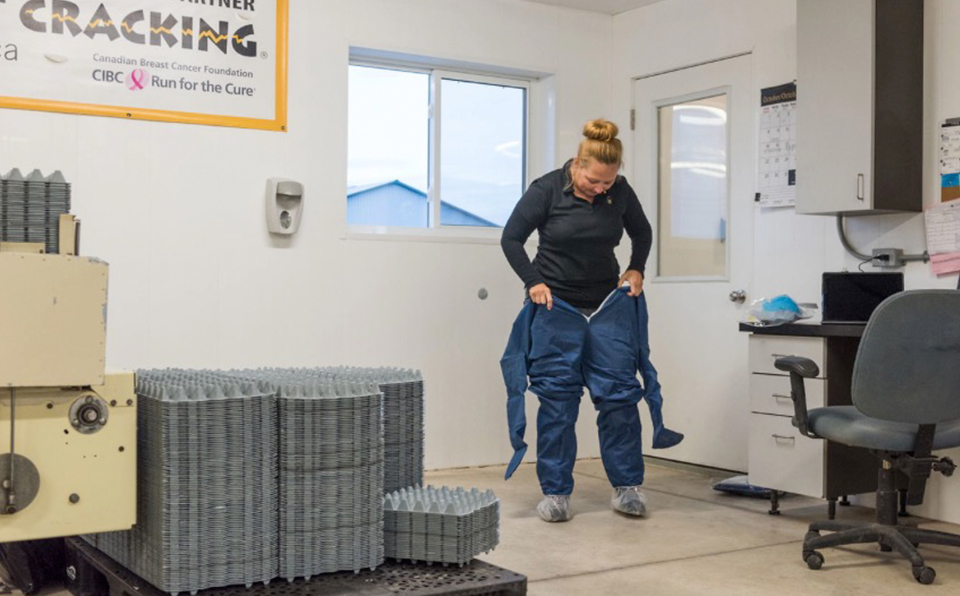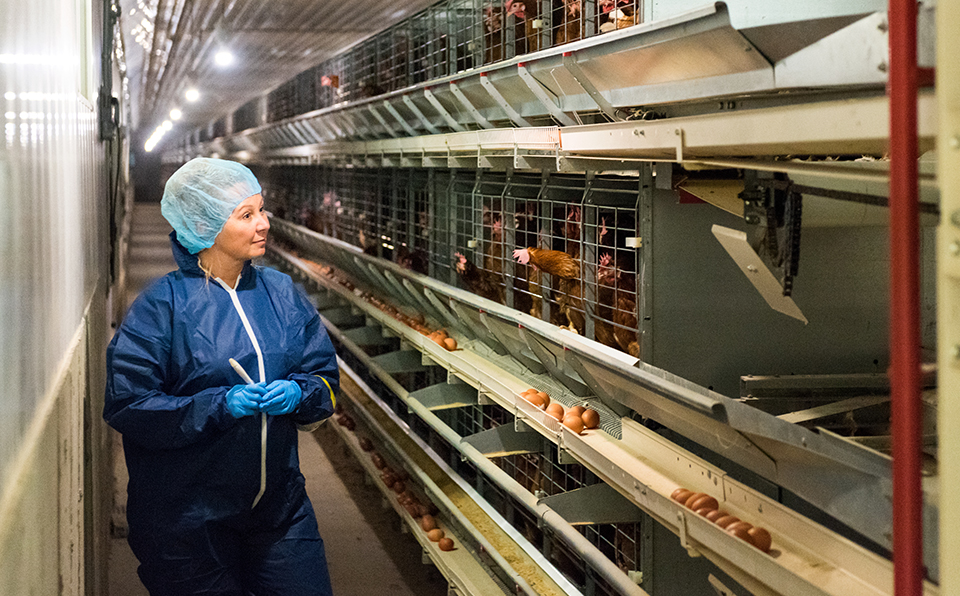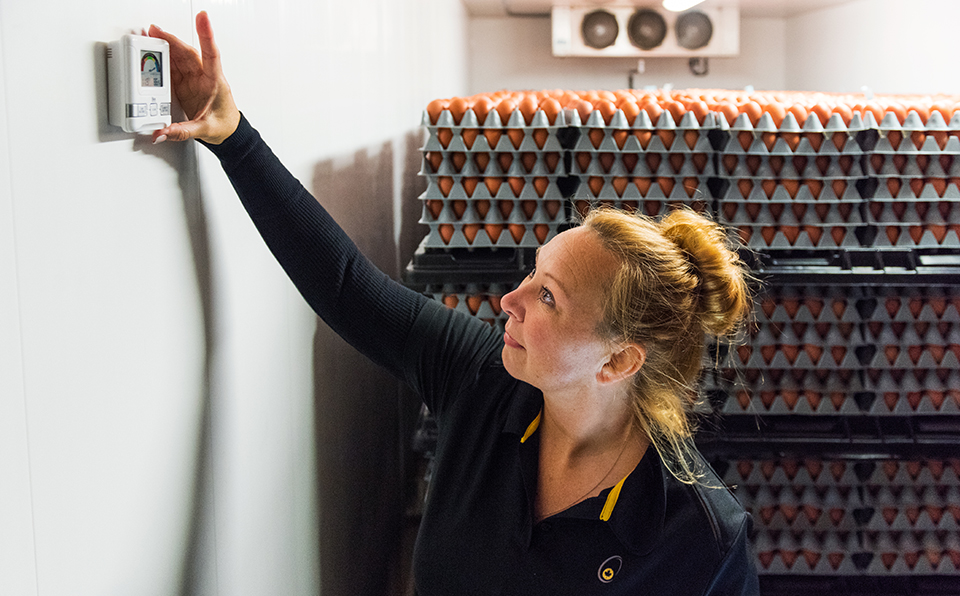
A behind the scenes look at an on-farm inspection
By Egg Farmers of CanadaIt’s an early morning—but it’s that kind of early where the rural countryside shows a side of itself you only see in the wee hours. Clouds are painted across an open sky in every direction. Not long from now, little streaks of light will peak through mist while Michelle Morrison drives to work.
Michelle is one of Egg Farmers of Canada’s field inspectors, the frontline folks who audit farmers against national standards. We spoke to her about a typical day as a field inspector and life travelling rural Canada, visiting Canadian egg farmers.
Michelle has spent ten years as an inspector. Her inspections usually take about a day, involving a thorough examination of what Michelle refers to as “control points”—points in the process where bacteria and other contaminants can affect hens or the eggs they lay. It’s these control points that play a key role in delivering the highest standards on Canadian egg farms.
“The inspection process breaks down into four areas: the exterior of the barn, the interior of the barn, the hens and record-keeping,” Michelle says.
Outside the barn

“This check is essential for pest control,” Michelle notes. Pests are the number-one cause of pathogens affecting hens. Farmers are required to check the exterior to ensure structural integrity. Without this feature, pests could sneak into the barn—bringing the contaminants they carry with them. Barns are built like a fortress to prevent exactly that.
Inside the barn
The interior of a barn is divided into two types of spaces—restricted access zones and unrestricted access zones. A restricted access zone, including where the hens live, is where biosecurity is enforced: outsiders must wear biosecurity suits (like the ones shown in the images below). The unrestricted access zone is basically an entrance way. A farmer must have an area of his barn that divides the main barn from the outside world. In this in-between zone, shoes and boots are sprayed down and biosecurity suits are put on before entering the space where the hens live.

“Farmers must respect biosecurity, and show evidence they are respecting it,” says Michelle.
“We have a motto: say what you do, do what you say and prove it.”
That means farmers need to write out their standard operating procedures and keep visitor logs detailing how those procedures are being followed. Michelle checks those logs and then heads into the barn itself, searching for cracks in the floor and other problems with structural integrity—spots where bacteria can hide.

When Michelle turns her attention to hen housing structures, she ensures there are no loose elements or other potential hazards. Her instincts and senses help this part of the process.
Record-keeping
An inspection, Michelle points out, is “a snapshot in time.” Reviewing a farmer’s records allows Michelle to go past that snapshot in time and review procedures since a farm’s last inspection.

Michelle has been watching this process unfold for a decade. So, what are the trends she’s been noticing over the past ten years?
“I’ve seen farmers are embracing the program year-after-year,” says Michelle.
“Farmers see the results of these programs—healthier hens, more eggs per bird and skyrocketing quality. Every year I see the level of commitment improve.”
It’s why Michelle loves her job.
“The egg is a miracle product, and farmers love their industry,” Michelle adds with a smile.
“It’s so wonderful to work with people who care about safety and animal care like I care about it. Everyone in this industry wants to be best-in-class. After all, we’re feeding an entire nation here!”